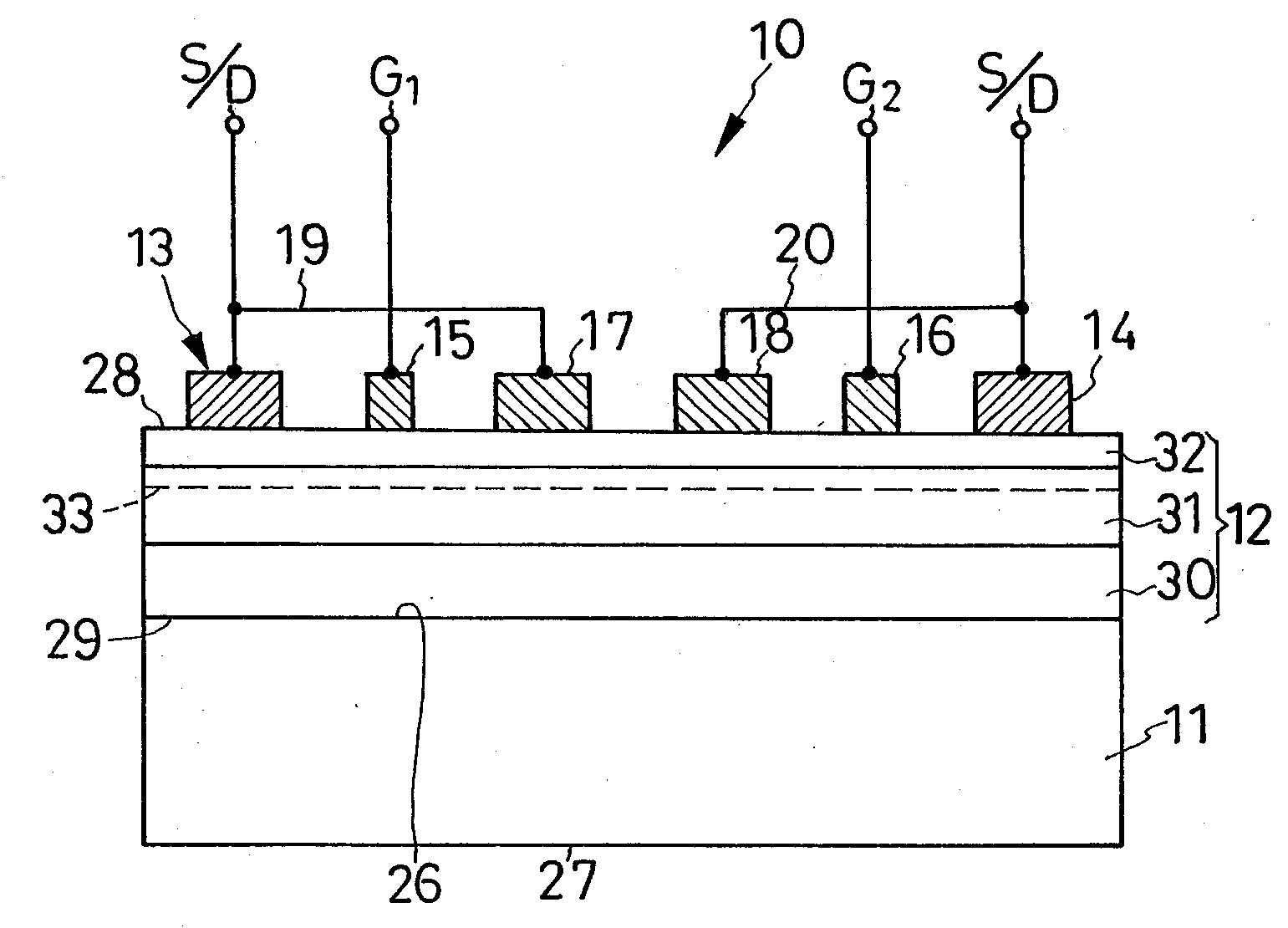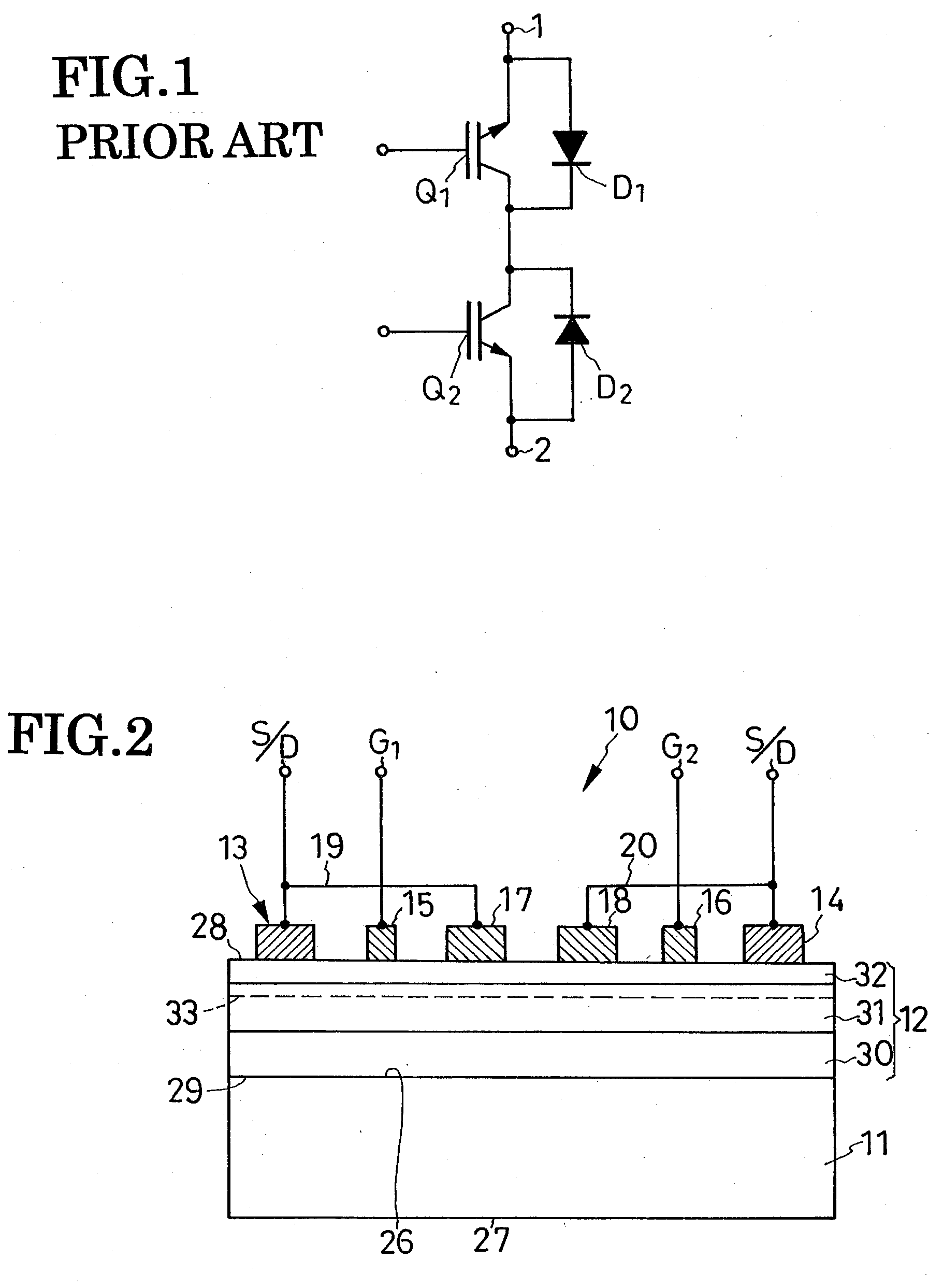Solid-state switch capable of bidirectional operation
a solid-state switch and bi-directional technology, applied in the field of solid-state switching devices, can solve the problems of not being able to be turned off at a controllable point in an ac cycle, being unnecessarily bulky and complex in construction, and being high in on-state voltage and resistance, and achieves greater versatility and utility.
- Summary
- Abstract
- Description
- Claims
- Application Information
AI Technical Summary
Benefits of technology
Problems solved by technology
Method used
Image
Examples
embodiment
of FIG. 7
[0099]Unlike the switching device 10a, FIG. 5, in which the two potential stabilizer diodes41 are discrete units only electrically coupled to the required parts of the device, the switching device 10b disclosed in FIG. 7 integrally incorporates potential stabilizer diodes. This switching device 10b may therefore be envisaged as a monolithic integration of the switching device 10 of FIG. 2 and the two potential stabilizer diodes 41 and 42 of FIG. 5. Thus the switching device 10b is comprised of a main switch section 50 of symmetrical design capable of bidirectional operation and, on its opposite sides, a pair of potential stabilizer diode sections 51 and 52 corresponding to the potential stabilizer diodes 41 and 42 above. The main switch section 50 and potential stabilizer diode sections 51 and 52 are all built on one and the same substrate 11a of electroconductive material.
[0100]The main switch section 50 of the switching device 10b is substantially equal in construction to...
PUM
 Login to View More
Login to View More Abstract
Description
Claims
Application Information
 Login to View More
Login to View More - R&D
- Intellectual Property
- Life Sciences
- Materials
- Tech Scout
- Unparalleled Data Quality
- Higher Quality Content
- 60% Fewer Hallucinations
Browse by: Latest US Patents, China's latest patents, Technical Efficacy Thesaurus, Application Domain, Technology Topic, Popular Technical Reports.
© 2025 PatSnap. All rights reserved.Legal|Privacy policy|Modern Slavery Act Transparency Statement|Sitemap|About US| Contact US: help@patsnap.com



